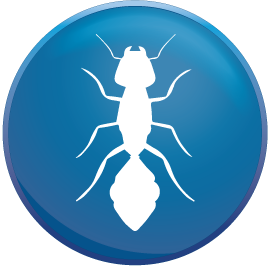Worries about natural life and the climate are turning out to be more significant in choices about which pesticides will be enlisted and what they might be utilized for. Two natural worries are getting specific consideration in Kentucky protection of groundwater, and insurance of imperiled species Federal and state endeavors to safeguard groundwater and jeopardized species are bringing about new directions and constraints for pesticide controllers. Whether you apply pesticides inside or outside, in a metropolitan region or in a provincial region, you should become mindful of the significance of safeguarding these two crucial public assets in the Pest Control Essex .

Pesticides that are mistakenly or accidentally released into the climate – either during the application or during other taking care of exercises, for example, blending, stacking, gear cleaning, capacity, transportation, or removal – represent a danger to groundwater and jeopardized species. Groundwater defilement is of most prominent worry in discharge destinations where groundwater is near the surface or where the dirt kind or the topography permits toxins to arrive at groundwater without any problem.
Security of imperiled species for the most part is required distinctly where they presently live or are being once again introduced. Peruse the pesticide marking cautiously to decide if your pesticide use is dependent upon any exceptional groundwater or jeopardized species restrictions. The EPA might lay out explicit restrictions or directions for pesticide clients where groundwater or jeopardized species are most in danger. These limits and directions are regularly too lengthy to be in any way remembered for pesticide naming. The marking might advise you to counsel one more hotspot for insights regarding the directions and limits for your circumstance. Your lawful obligation regarding adhering to directions that are conveyed independently is equivalent to guidelines show up in full on the pesticide marking.
Safeguarding Ground Water
Groundwater will be water situated underneath the world’s surface. Many individuals believe that groundwater happens in huge underground lakes, waterways, or streams. Normally, in any case, it is situated in rock and soil. It moves gradually through unpredictable spaces inside in any case strong stone or leaks between particles of sand, earth, and rock. A special case is in limestone areas of Kentucky, where groundwater might course through enormous underground channels or sinkholes. Surface water might move a few feet in a moment or a moment. Groundwater might move a couple of feet in a month or a year. Assuming the groundwater is fit for giving huge amounts of water to a well or spring, it is called a spring. Pesticide pollution of springs is extremely upsetting in light of the fact that these are wellsprings of drinking, washing, and water system water. Wellsprings of Ground WaterGround water is re-energized (supplanted) for the most part from downpours or snow that enters the dirt. Notwithstanding, a few glasses of water from lakes and streams and from the water system additionally become groundwater.
Water that is over the ground can move in three ways:
It can dissipate up high; it can get across the surface, as in a stream or waterway; or, it can drop down from the surface. Some water that moves to descend is consumed by plants and different living beings. One more part of this water is held in the upper soil layers. The rest drops down through the root zone and the somewhat dry soil zone until it arrives at a zone soaked with water.
